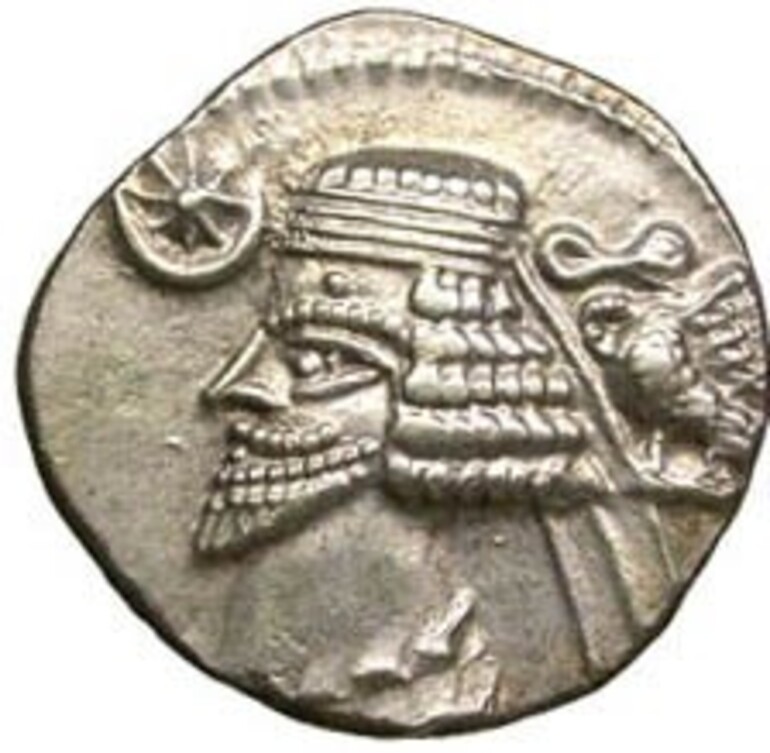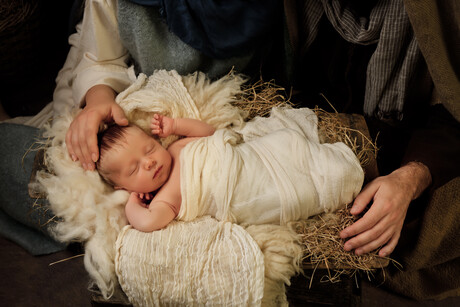“’Tis the season” to see nativity scenes — like the lighted display here at the NPUC. Traditionally, we see wise men and shepherds worshiping the baby Jesus in the manger. The image of that wondrous incarnation of our Creator needs no enhancements to be powerful. Yet, many nativity sets have a lot of things wrong!
Gone from these sets are the children of Joseph from a previous marriage. There were at least four sons and two daughters, and perhaps more. It was their memories that informed Matthew of the story’s details, whereas Luke’s account is based upon Mary’s memories. The scene was likely in a cave used for farm animals. There were probably no donkeys. And the wise men almost certainly traveled on horses, not camels. But by the time they arrived in Bethlehem Joseph and Mary were “at a house.”
Who are the wise men? And where were they from? At their arrival in Jerusalem, all of Jerusalem was “troubled,” especially Herod. His fears were based upon two things: his paranoid view of potential threats to his throne (he had three sons killed) and his memories of how he got the throne in the first place. That fear was about Parthia. The wise men were “Magi,” a word that suggests they were from either a tribe of Media or a priestly class of noblemen. And they were Parthians.
The Parthian Empire stretched for hundreds of miles eastward from the Roman Empire’s borders in the holy land. There had been major battles between the two just decades before Christ’s birth. When the Romans had successfully pushed the Parthians out of Judaea in 40 BC they installed Herod as a vassal king, replacing a Parthian favorite who was a Jew. Herod was an Edomite (Idumaean). He had no legal claims as a Jew born to be king; instead, he was an astute politician who courted Rome’s favor successfully.
Fast-forward to the birth of Jesus; there was an uneasy truce with Parthia that Rome did not want to upset. Hence, Herod treated these visitors from the east with initial respect. But it is doubtful that he trusted them.
But who were these magi really? They almost certainly knew King Phraates IV and likely resembled him in style of hair and dress. The drachma illustrates this. They were students of nature, believing that the gods contacted humanity via the stars and dreams. Interestingly, God met this understanding by communicating with them via stars and dreams! The 8th Century legend of them having the names of Melchior, Balthasar and Gaspar, plus being kings from three different kingdoms, is just that: a legend. The number three is likely tied to the number of gifts. If they indeed came from northern Arabia they likely traveled on horseback. And they probably had a security detachment of Parthian soldiers.
Their studies included the Hebrew scriptures, especially those written by “eastern” writers like Daniel, once linked with a similar priestly class in the Medo-Persian Empire. He had predicted the coming Messiah with time prophecies. And then there was the eastern prophet Balaam, who predicted in Numbers 24:17 that a “Star shall come out of Jacob, and a Sceptre will rise out of Israel.” But beyond such knowledge lies the heart’s yearning for God. And though they were surprised at the poor surroundings of this baby King and the absence of a security detachment, I personally believe that they left with no regrets.
Today, and just as it was over two thousand years ago, anyone who seeks and finds this humble King will fall and worship as did the wisemen. “'Tis the season” to do just that.










